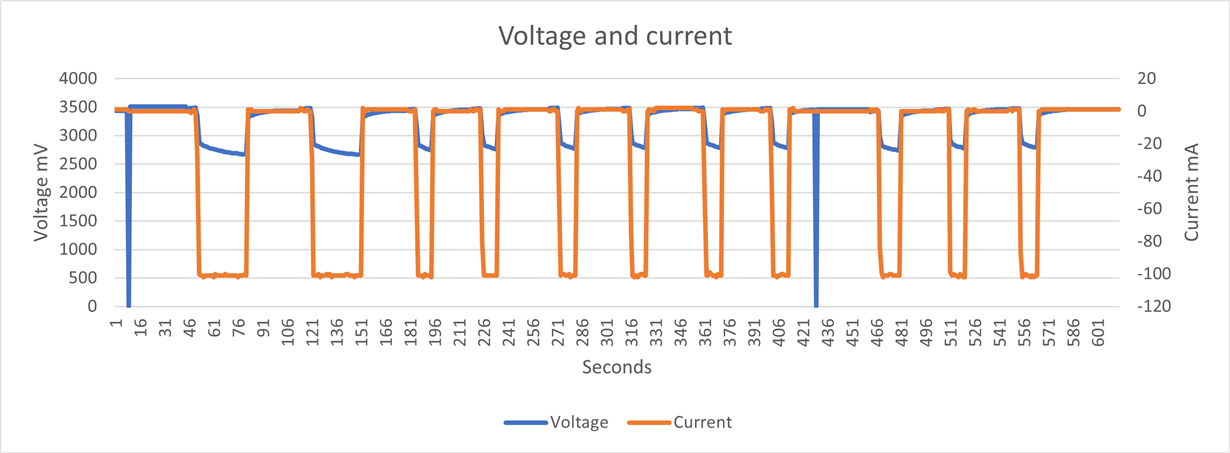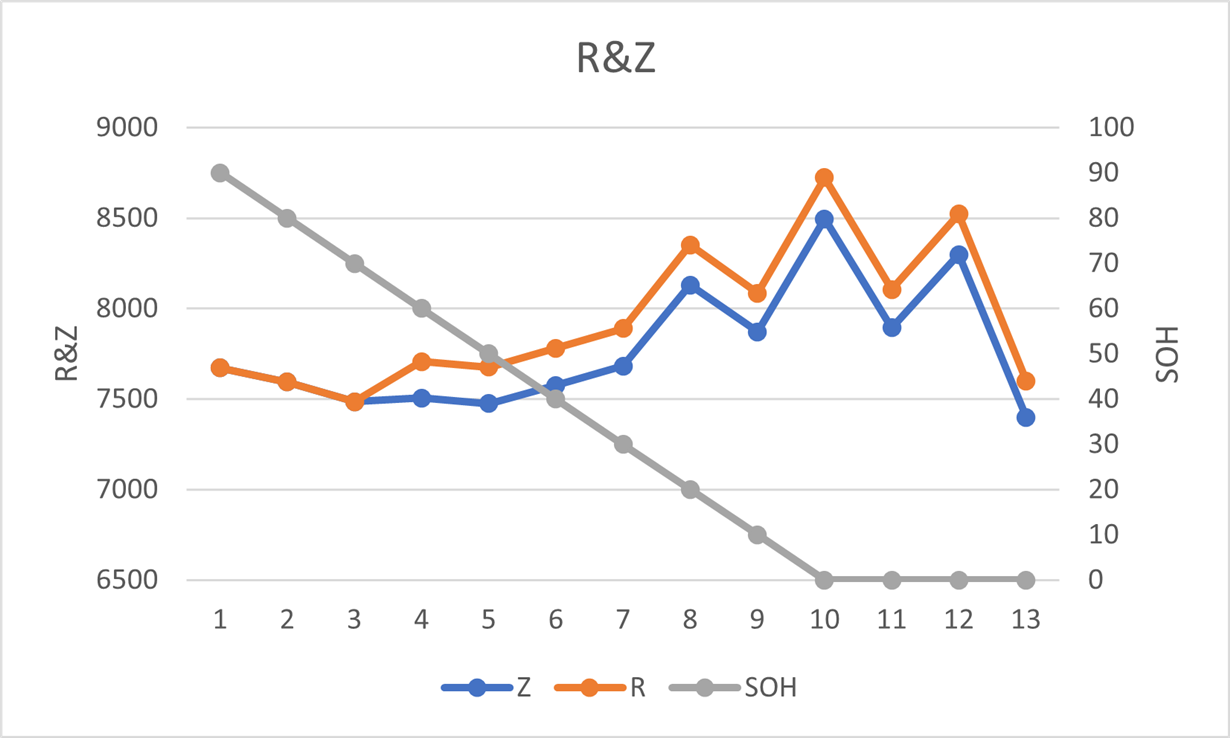Other Parts Discussed in Thread: BQSTUDIO
Hi Team,
We are using BQ35100, EVM2400 and BQ35100 to get correct SOH value in EOS mode of Tadiran 5920 (CHEM ID 0x0609). These are the results of Initial learning pulses after sending NEW_BATTERY Command.
1. Why SOH value is continuously decreasing? The method followed for pulses is this
2. The R and Z values are not reflecting SOH to be 0 (After looking at Ra Table). Please provide some explanation, why this is happening?
Attached: gg.csv file: Tadiran_test.gg.csv
Regards,
Prudhvi




